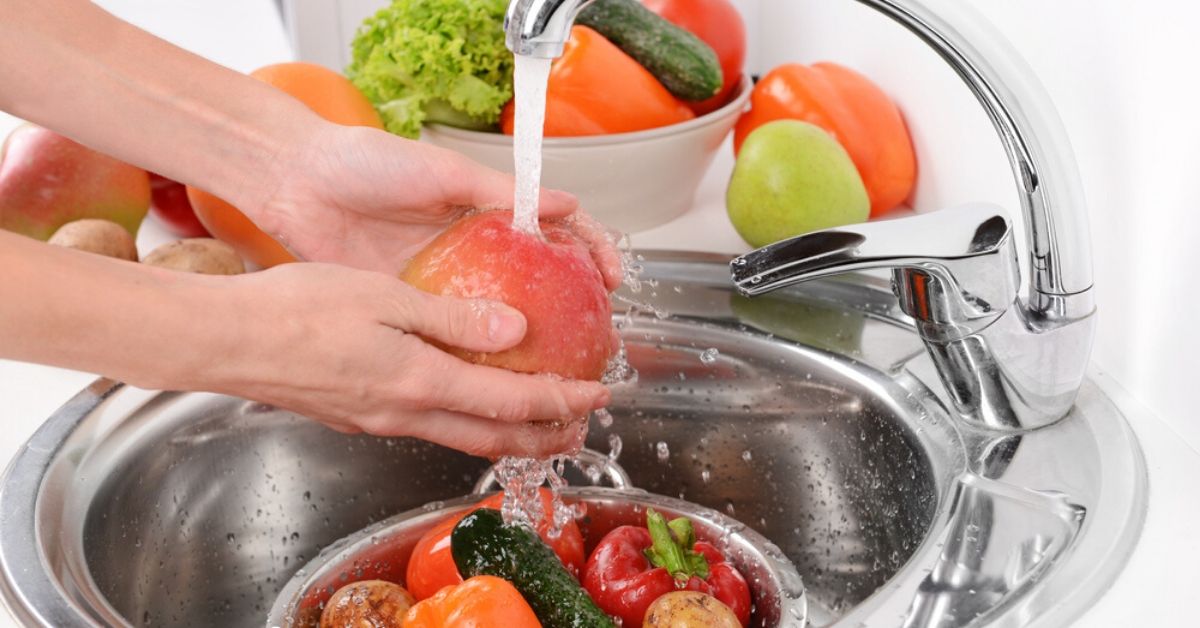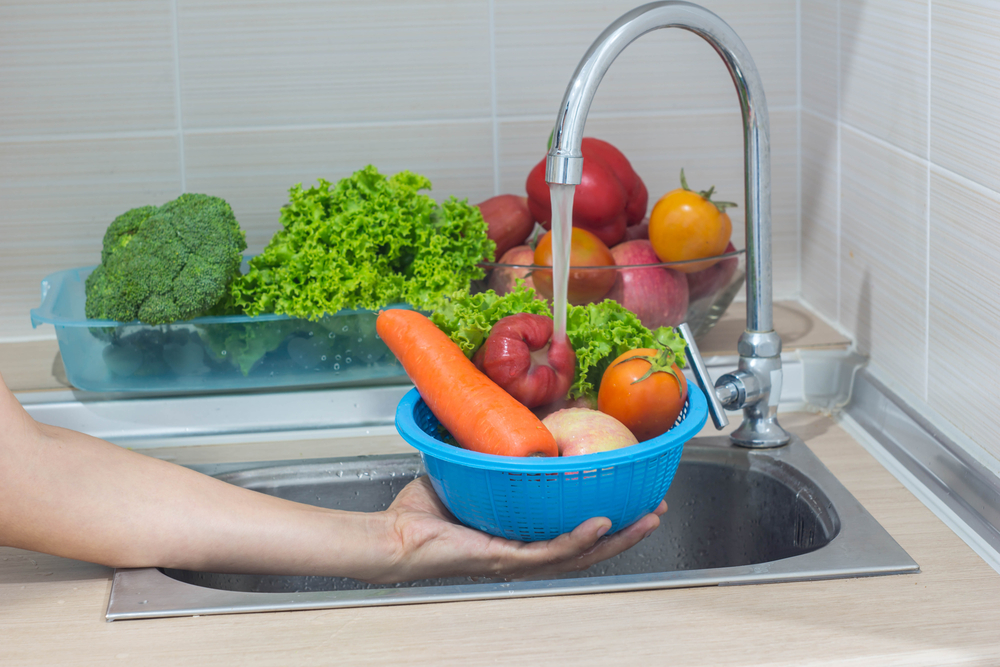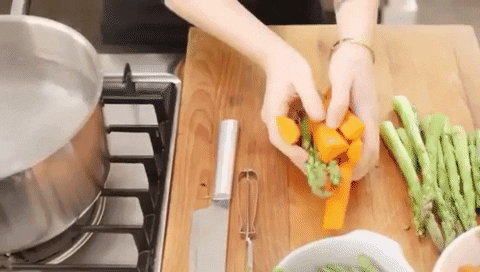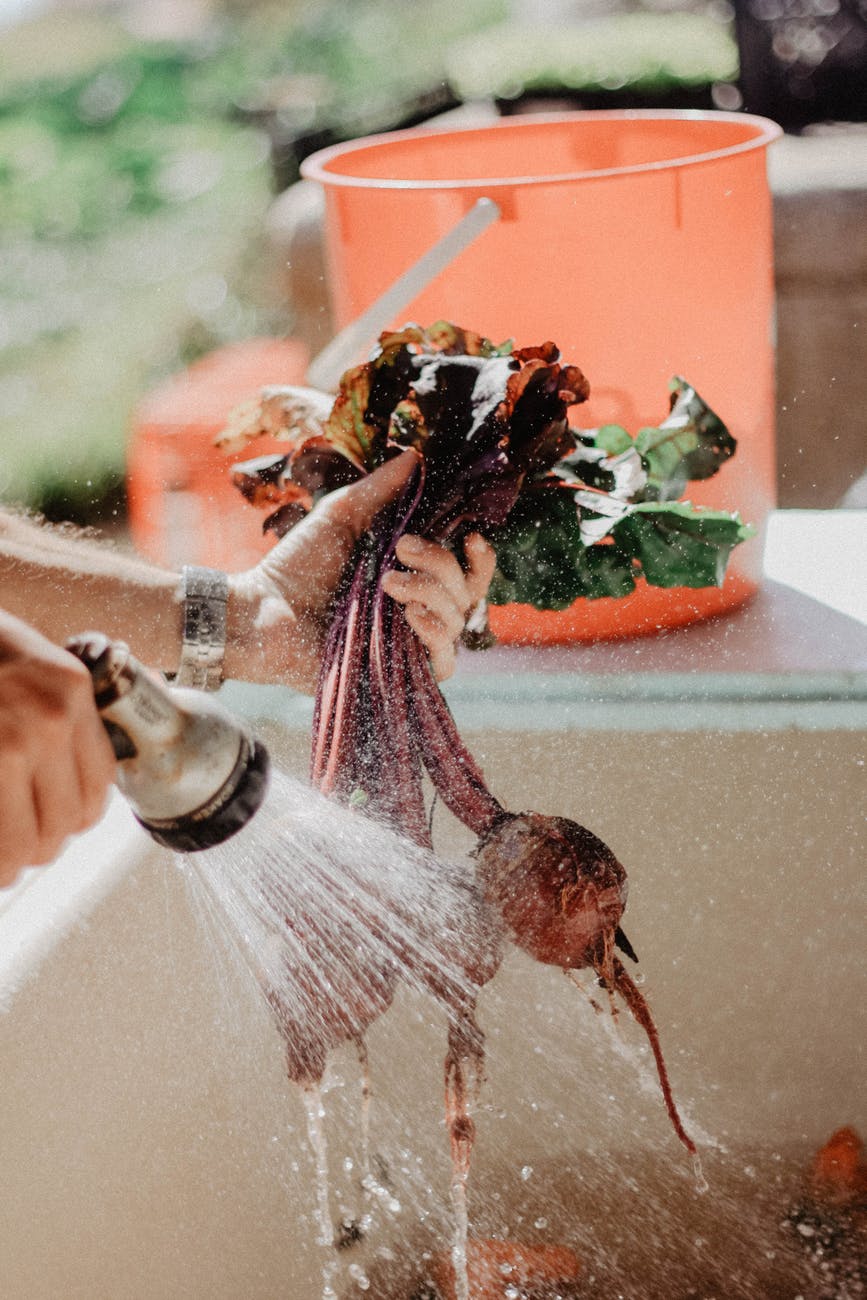Get Rid of Pests & Pesticides: How to Wash Fruits & Vegetables
From blanching to using salty water, here are five ways to can keep your veggies and fruits clean and healthy.

Did you know that cucumbers, apples, strawberries, grapes, spinach, and potatoes are some of the most pesticide-contaminated fruits and vegetables?
While this may come as a surprise to some, it is no secret that the food grown in our farms is sprayed with chemicals to prevent crop loss due to pest attack and increase yield.
Thus, it is vital to rinse vegetables and fruits. If consumed without proper washing, it can lead to health issues and food-borne illnesses.
Here are some steps you should take to get rid of dust, chemicals and pesticides from your fruits and vegetables:
Please Note: Start by washing your hands with soap. If your hands are dirty, then you might end up making the fruits and vegetables dirtier.
1. Cold and Running Water

This is probably the most common method used to remove dirt across Indian households. Remove the packaging and stickers and rinse the vegetables properly.
For firm veggies, remove the grime with your hands after washing them in running water.
Meanwhile, bathe leafy vegetables. Soak the vegetables in a bowl of water for a few minutes, remove the dirt with your hand, and rinse them. Do this process twice.
The best way to clean mushrooms is to use a damp cloth as putting them under a running tap can disfigure it. Do not forget to pat dry.
Wash fruits like grapes, apples, guavas, plums, mangoes, peaches and pears at least two to three times.
2. Vinegar and Water
A solution of 10 per cent white vinegar and 90 per cent water is another cleaning method. Soak the vegetables and fruits for 20 minutes, stir them and then rinse them with plain water.
This will keep your veggies fresh for longer without spoiling them.
3. Salt/Baking Soda with Water
This is an alternative to the vinegar solution.
Add one teaspoon of salt or baking soda in a litre of water and soak the veggies for about 2-5 minutes. Fruits take longer, so soak them for about 30 minutes. The solution will remove the pesticide from the skins of fruits and vegetables.
4. Blanching

Blanching is a process where food items are immersed in hot water, followed by cold water.
Boil water in a pan and turn off the flame. Immerse your veggies in the pan for not more than three minutes. It stops enzyme actions, which can cause loss of flavour, colour and texture.
To stop the cooking, quickly transfer the veggies into a bowl of ice cubes or run cold water over them.
5. Make a Vegetable Spray

With DIY in vogue, why not make an organic spray that can kill the bacteria on fruits and veggies?
Mix one tablespoon of lemon juice, two tablespoons of white vinegar, and one cup of water. Remember to store this solution in a non-plastic bottle, like a glass jar.
Shake well before use and rub the solution on food with your hands or a vegetable brush for about 30 seconds. Rinse it with cold water.
“From the time your food is harvested on the farm until it comes to your table, it has been touched by several people and stored in numerous places. The warehouse could have insects and rodents, and the vendor may not have kept their place clean. Even if you buy organic produce, which is less risky, wash it. Be careful while washing and make sure you are not eliminating fibre content like the skins of fruits and veggies,” Preeti Sinha tells The Better India. She’s the founder of Hyderabad-based Greens and More, a startup that provides tailored healthy meals.
Also Read: How to Segregate Waste At Home & Office: 4 Things to Know
With the above steps, we hope you can also keep your food clean and healthy, thereby absorbing their benefits fully.
(Edited by Shruti Singhal)
Like this story? Or have something to share?
Write to us: [email protected]
Connect with us on Facebook and Twitter.
If you found our stories insightful, informative, or even just enjoyable, we invite you to consider making a voluntary payment to support the work we do at The Better India. Your contribution helps us continue producing quality content that educates, inspires, and drives positive change.
Choose one of the payment options below for your contribution-
By paying for the stories you value, you directly contribute to sustaining our efforts focused on making a difference in the world. Together, let’s ensure that impactful stories continue to be told and shared, enriching lives and communities alike.
Thank you for your support. Here are some frequently asked questions you might find helpful to know why you are contributing?


This story made me
-
97
-
121
-
89
-
167













